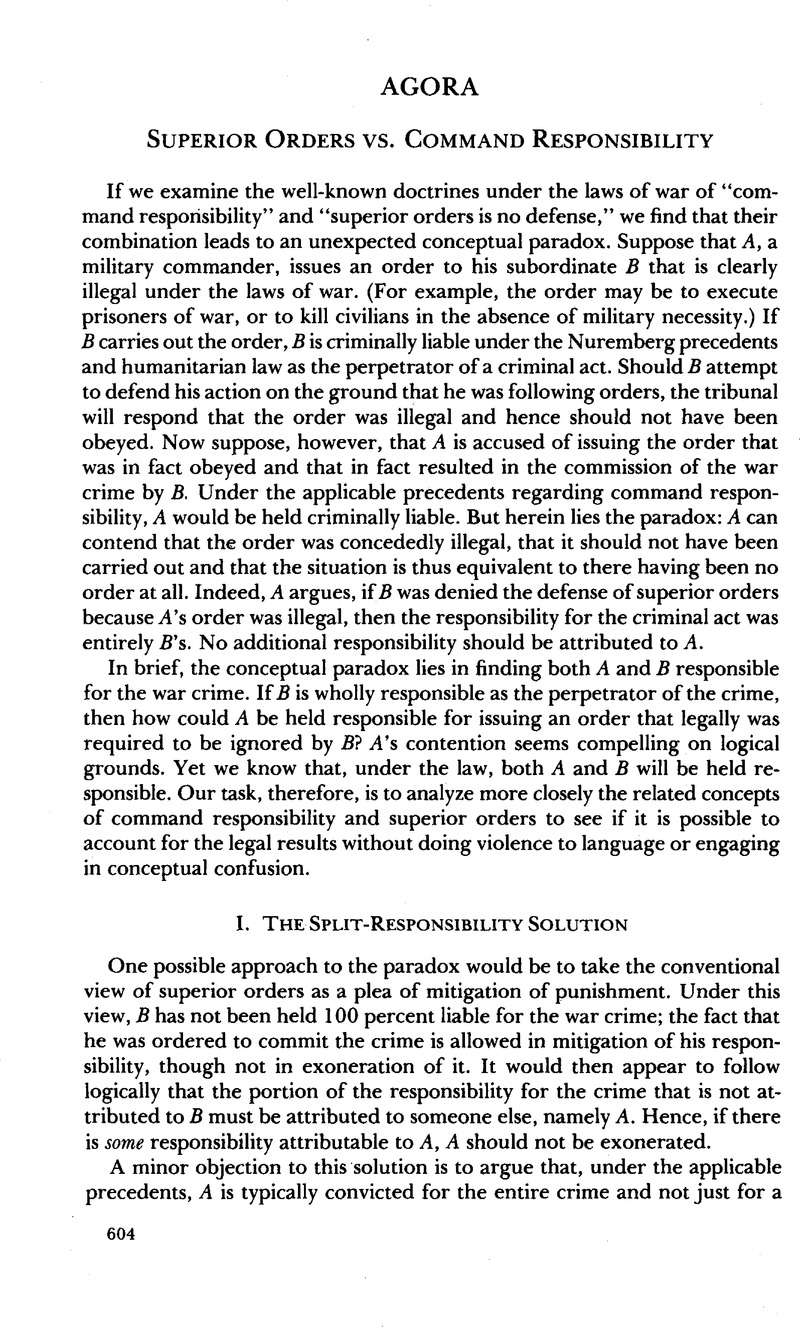Published online by Cambridge University Press: 27 February 2017

1 I have couched this second requirement in terms of capability rather than the mere fact of being a commander, for at the Far East tribunals it was established that mere nominal command, when conditions were such that the commander was unable to control or discipline his troops, was insufficient to sustain the prosecutor’s burden. See Parks, , Command Responsibility for War Crimes , 28 Mil. L. Rev. 1, 33 (1973)Google Scholar. Despite the conclusions of R. Lael, The Yamashita Precedent: War Crimes and Command Responsibility 141 (1982), General Yamashita’s case met both elements of command responsibility with respect to some of the war crimes committed in the Philippines in 1944. See 4 United Nations War Crimes Commission, Law Reports of Trials of War Criminals 1 (1948) (Trial of General Tomoyuki Yamashita). In one of the Far East cases, Admiral Toyoda was acquitted on the ground that he lacked the capability of control. See Parks, supra, at 23.